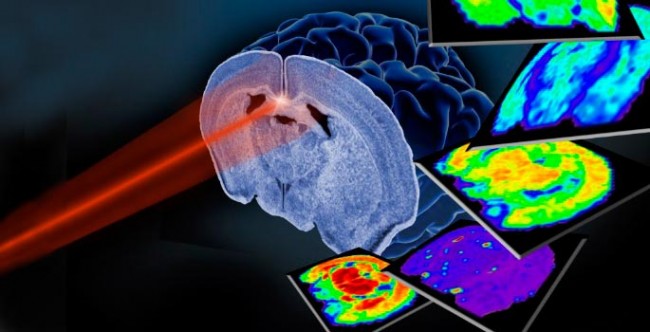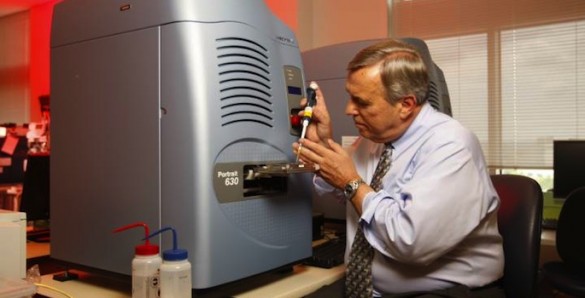The National Institutes of Health (NIH) has awarded a major renewal grant to continue the National Research Resource for Imaging Mass Spectrometry at Vanderbilt University School of Medicine.
The five-year, $10.5-million grant will support groundbreaking projects aimed at visualizing, at the molecular level, retinal disease, ovarian cancer, the impact of diabetes on the kidney and brain, and host-pathogen interactions in infectious diseases, said the grant’s principal investigator, Richard Caprioli, Ph.D.

Caprioli is the Stanford Moore Professor of Biochemistry and director of the Mass Spectrometry Research Center at Vanderbilt University Medical Center (VUMC), the site of the national resource.
In the late 1990s, his lab developed a technology called imaging mass spectrometry (IMS) to visualize the location of biomolecules in cells and tissues.
Essentially a “molecular microscope,” it measures the distribution, spatial rearrangement and alteration in expression levels of proteins, lipids and other biological molecules. IMS has particular relevance to cancer and has informed the study of human glioblastomas (brain tumors) as well as tumors of the breast, colon, prostate, skin and lung.
Last year, Caprioli’s team reported the first “image fusion” of mass spectrometry and microscopy, a technological tour de force that allows scientists to see the molecular make-up of tissues in high resolution.
Since it was established in 2011, the IMS Research Resource has supported projects leading to more than 50 scientific publications. It has produced instrumentation that can achieve a spatial resolution of 5 microns, about the size of a bacterium, and in special cases, down to 1 micron (1,000 nanometers).
The renewal grant will enable researchers to continue to push the boundaries of spatial resolution down to 500 nanometers — about the size of a virus, said Caprioli, who also is professor of Chemistry, Pharmacology and Medicine.
It also will support continued development of “image fusion” techniques pioneered at Vanderbilt “to produce images of uniquely high informational content not otherwise possible from any single modality alone,” he said.
The grant — P41GM103391 — was awarded earlier this summer by the National Institute of General Medical Sciences, part of the NIH. About $2.4 million was provided for the current fiscal year.















